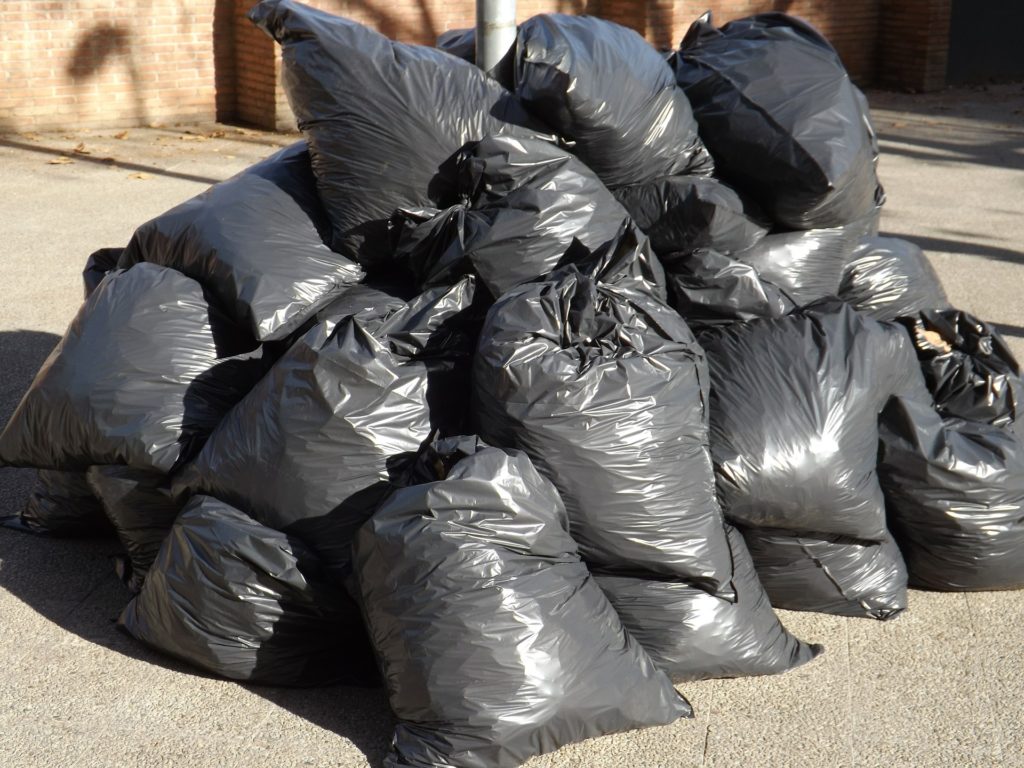The majority of people don’t really know what to picture when I say, “I do waste audits”. There are a lot of reasons and benefits to doing a waste audit, (which you can read about in this blog post), but basically a waste audit is a “snapshot” of how you’re company is doing in regards to throwing stuff away. A waste audit identifies what recyclables, organics and other items are ending up in the trash that aren’t actual “garbage”.
So let me paint you a picture.
I get a business to hold back a couple days worth of garbage. The trash is either stored somewhere or we pull the bags out of the dumpster. I get a team of volunteers from the organization to help me and before we go anywhere near the trash we suit up. We put on full body hazmat suits with bootie covers, nitrile gloves and safety glasses. We set up a tarp with labeled bins, at least 5 categories including Recyclable, Depot Items, Compostable, Hazardous and Garbage. On the labels it defines what is accepted in each category, and let me tell you, the only thing that is actually garbage is usually small plastic items, snack wrappers and plastic bags sold as products (like Ziploc bags and garbage bags). Almost everything else can be diverted. We have a weigh scale set up and know the volume of the containers we are sorting into so we can measure what goes into each category.
Then we start by opening up one garbage bag at a time. We look at all the items inside and re-sort it into the correct categories. We are very careful to avoid touching broken glass or anything else hazardous, and sometimes use tongs to pull the garbage out. Depending on the size of sample, it can take 1-3 hours (unless it’s a large organization).
Once everything is sorted, we weigh the sample. We may do this as we go along depending on if the containers are getting really full. Once it’s finished, we can visually see how much waste that was destined for the landfill should actually be going to the landfill. It’s usually around 25%.
We clean up, put all the waste where it is supposed to go, wash off the containers and tarp and dispose of our gloves and suits. Then it’s time to crunch the numbers.
The data that comes out of this is a baseline. Goals and actions can be set based on this data to work to improve waste diversion within the organization. A waste audit should be conducted annually to compare the amount of waste and the category weights, to make sure the actions set in place are actually working.
Do your own waste audit. We have a free handy guide on how to conduct your own waste audit. Download it at the end of this post https://www.sustainabletourism2030.com/how-to-reduce-waste-at-work/
Hire a company to do your waste audit. We do waste audits all the time for businesses, schools, universities and events. We encourage people to do their own but we also come in with all the equipment and can do them ourselves, with or without the help of volunteers. Visit http://www.greenstep.ca and give us a call.
Even if you’re already doing a great job diverting recyclables and organics from the landfill, a waste audit gives you tangible results you can use in your sustainability reporting year over year. We encourage every business, big or small, to do this at least once a year.
